I just love, love, love the varied effects that different quilting techniques create. And that they can be combined in the design of beautiful works of unique and bespoke homemade art.
This post provides you with a brief introduction into the world of quilting techniques for beginners––some of which you can work by hand, some by using a sewing machine––but all highly effective.

Sewing Machines
A quick word on sewing machines:
Modern household sewing machines are fantastic labor-saving devices––allowing us to make relatively quick work of all sorts of projects and creations. They are easy-to-handle, fast, and often automatic. And they can used for sewing, embroidery, making buttonholes… and quilting.
But some machines are more suited to quilting than others, so if you plan to use one for quilting projects, this is worth considering when choosing a new machine.
Now let’s get started with our 9 beautiful quilting techniques.
Quilting Techniques
1. Patchwork
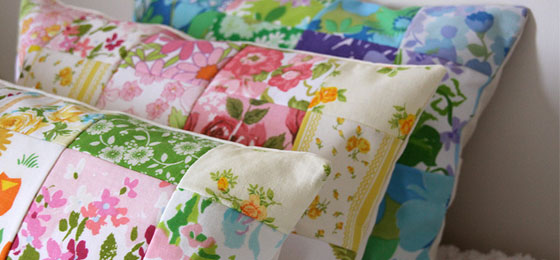
The origin of patchwork quilting dates back thousands of years to the ancient Egyptian and Chinese cultures.
It’s relatively easy, and absolutely perfect if you love to recycle fabrics! Next time you’re decluttering your closet and throwing out old clothes, keep your eyes open for any fabrics that would be good for patchwork projects. And of course, you can find new fabrics perfect for patchwork in stores and online.
2. Appliqué
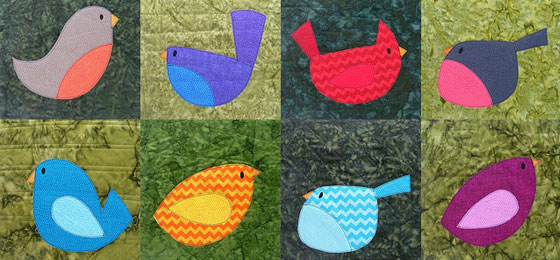
The word “appliqué” comes from the French word meaning “applied”. And when used in quilting, applique is a technique where a small piece of fabric is sewn onto a larger background.
You can use it to create handbags, hats, bedding, shirts, pants, towels…
And of course to make your own quilt, inspired by whatever you, your family, or that special person you’re making it for, love. It makes a unique gift––just remember to take into account the length of time it takes to complete!
The pieces of fabric are generally folded over at the edges, and sewn with straight stitching 2-3mm inside the folded edges. You can also apply the raw edge method, using the buttonhole stitch. See here for a great intro.
3. Reverse appliqué
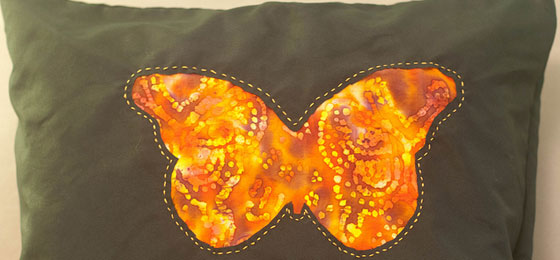
When reverse appliqué is used, the fabric of choice peeks through the background fabric instead of being stitched on top. It is sewn under the top layer of fabric where a shape or design has been cut out, creating a 3-dimensional effect.
This also makes a great base to embellish, see later in this post.
4. Trapunto
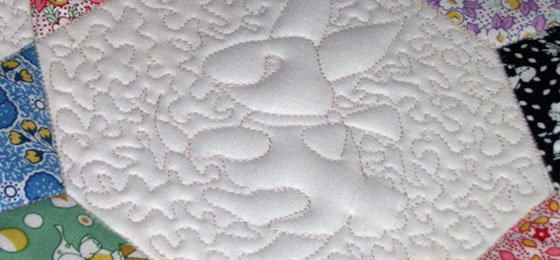
The trapunto quilting technique also creates designs with dimension, with the quilt design being raised using an extra layer of batting, to create a bold “stuffed” effect.
Batting which is 20% to 30% polyester or 100% polyester is ideal for this technique, helping to give the puffy, 3D effect.
5. Embellishment

With embellishment, decorative elements are sewn on to the top layer as you can see in the image above. This allows you to enhance your projects, reinforcing your chosen theme, and making it truly unique and bespoke.
Designs can be made using:
- different types of embroidery stitches with colored threads
- beads and sequins made from different materials like wood, plastic, crystal, metal…
- a combination of the two
6. English paper piecing
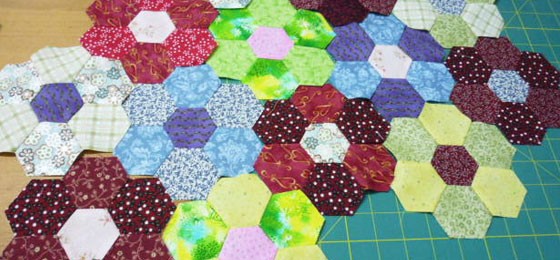
A more complicated design using multiple angles and corners, like hexagonal shapes, calls for the English paper piecing technique, which helps to stabilize the fabric with paper.
- Papers are cut in the exact shape and dimensions of the desired pieces for the design. And the pieces of fabrics are then basted to the paper pieces by hand.
- The paper remains in place until units are complete, securing the pieces tightly together, and helping to maintain a routine shape and size.
- You can remove the basting and the paper templates when a unit is complete, or when a piece is surrounded by other basted paper pieces.
You can cut your own paper templates by tracing the shapes onto paper, and then cutting through multiple paper layers to get several pieces out of one cut. Alternatively, you can buy pre-cut pieces in different shapes and sizes online.
7. Free motion quilting
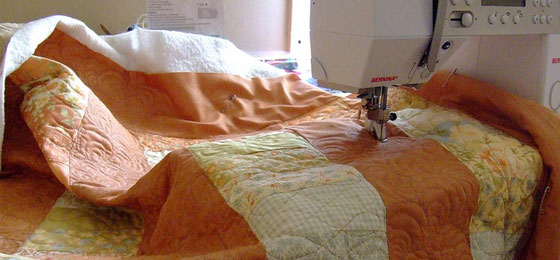
Free motion quilting is a fun, relaxed technique using a sewing machine.
Using the free motion technique you can make a stitched pattern––either by following a traced design or stitching freestyle––and quilt as you go. Feathers are a common pattern created by quilters using this technique.
You can also use it to enhance a simple quilt, and breath new life into it.
It is recommended that you use special gloves, which have a unique texture. These allow for the easy movement of the fabric, while at the same time stopping it from slipping under your fingers.
8. Strip piecing

In strip piecing, long fabric strips are sewn together to form a pieced strip block or unit.
And this is another technique perfect for recycling fabrics you may have at home, making your designs unique.
9. Foundation quilting
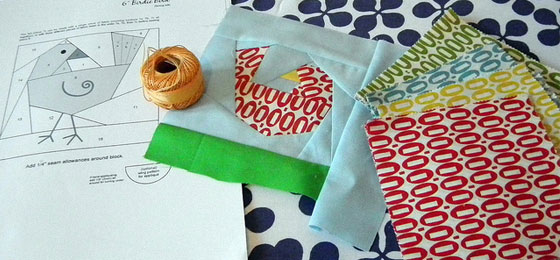
The foundation quilting technique is similar to the English paper piecing technique discussed earlier.
First, you create a paper pattern, which you then use as a building “foundation” for piecing the quilt block together. If you have a very intricate design, this foundation helps to keep the design precise and to reduce distortion.
You’ll need to use a thin, very light-weight paper. And it’s super helpful to remember to keep your pattern organized and numbered!
Let me know how you get on
There are other, more advanced quilting techniques, but we’ll save those for another day. I hope this introduction to various quilting techniques inspires you, and helps to get you started in this beautiful art.
Have you tried quilting before? I’d love to hear about your experiences, and any tips or advice you have to offer. Let us know more in the comments below…
Leave a Reply